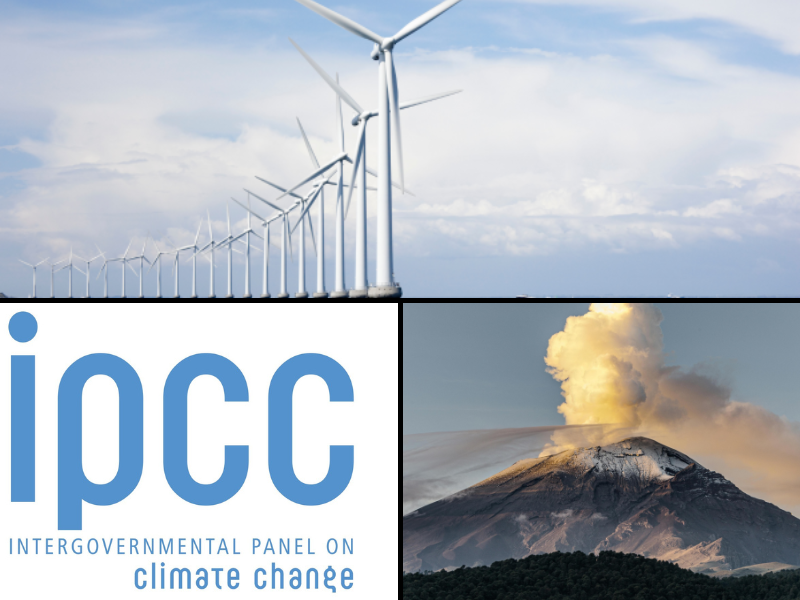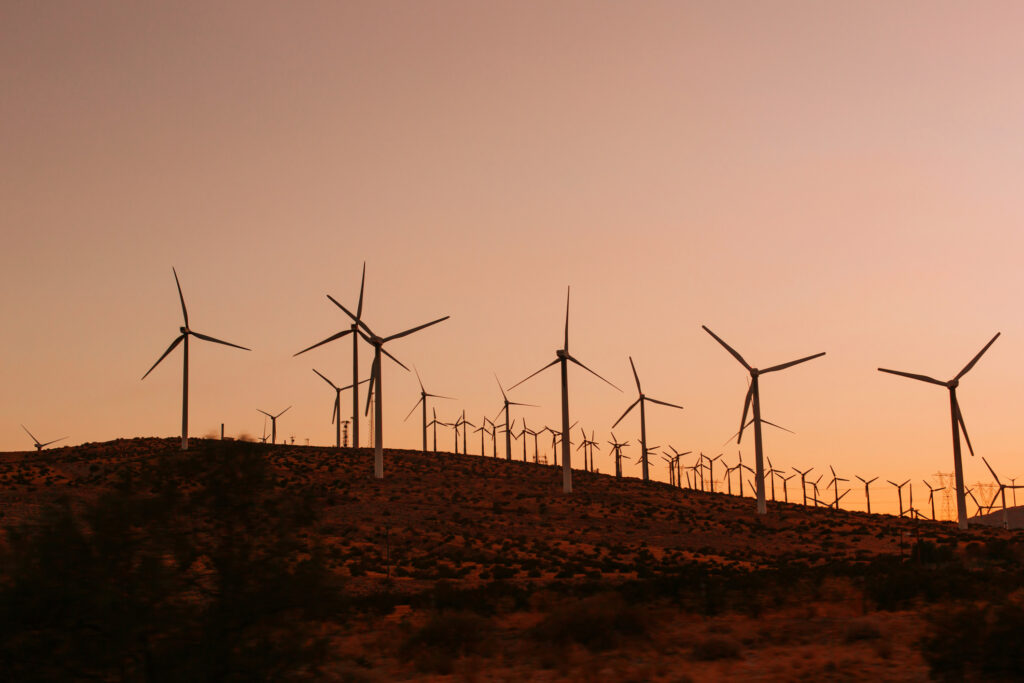Fake News reporting to the contrary, during his 60 Minutes interview, President Donald Trump showed a greater understanding of the politics surrounding climate science and the history of climate change than the Intergovernmental Panel on Climate Change’s (IPCC) recent report.
In the climate portion of her interview with Trump, 60 Minutes reporter Lesley Stahl raised Trump’s previous statement concerning climate change being a hoax, to which Trump responded, “I think something’s happening. Something’s changing, and it’ll change back again. I don’t think it’s a hoax, … but I don’t know that it’s manmade.”
Stahl, who had clearly drunk the climate alarmist Kool-Aid, was unprepared for the challenges Trump raised to her line of questioning. When Stahl began, “I wish you could go to Greenland, watch these huge chunks of ice just falling into the ocean, raising the sea levels,” Trump responded quickly and accurately, “And you don’t know whether or not that would have happened with or without man. You don’t know.” When Stahl tried to claim all scientists agree humans are causing dangerous climate change, Trump responded, “We have scientists that disagree with that [claim]. I’m not denying climate change. But it could very well go back. You know, we’re talking about over millions [of years].”
When Stahl claimed disasters such as hurricanes are getting worse than ever, Trump pointed out, “We had hurricanes that were far worse than what we just had with Michael.” This is an undeniable fact. Stahl pushed on, saying, “Yeah, but what about the scientists who say it’s worse than ever?” Trump asked her to name a scientist who said that, which she admitted she couldn’t. Trump concluded, “You’d have to show me the scientists, because they have a very big political agenda, Lesley. … Look, scientists also have a political agenda.”
Trump’s last point was spot-on. From its very formation, the IPCC was a political, not a scientific organization, directed by politicians to research the “human causes” of climate change—as if nature—the Sun, clouds, and oceanic cycles, for example—plays no role in climate. “Government,” not “science,” is in the IPCC’s name, and its most recent “Summary for Policymakers” was shaped by bureaucrats’ desires for ever-greater government intervention in the economy and people’s lives, delivering more money and power to government bureaucrats and anti-capitalist nongovernmental organizations. To produce this result, the 2018 report, like each previous Summary for Policymakers, ignored or downplayed significant scientific uncertainty regarding the causes and consequences of the present period of climate change.
The most basic assumption built into climate models is carbon dioxide and other greenhouse gases drive temperature changes. Thus, the foundational projection climate models make is that as greenhouse gas emissions rise, the planet’s temperature will rise as well. Numerous peer-reviewed studies, however, demonstrate climate models grossly overstate the amount of warming the Earth has experienced as carbon dioxide levels have increased. In addition, climate models entirely missed a recent 18 year hiatus in rising temperatures, and as detailed in CCW 301, research shows across 522 million years of history, the level of atmospheric carbon dioxide has had no causal relation to temperature or climate conditions.
The failure of the IPCC’s temperature projections to match recorded temperatures provides ample reason for not trusting any of the organization’s other projections. If IPCC can’t get basic temperature measurements right, why trust its projections about disease, drought, extinctions, famine, flood, hurricanes, and sea levels, especially when real-world data demonstrates past IPCC predictions on these matters have been consistently wrong?
One reason various peer-reviewed papers have speculated IPCC’s temperature projections consistently overstate the Earth’s temperature is climate modelers assume the Earth’s climate is more sensitive to changes in greenhouse gas levels than it actually is. This stems from the fact modelers build in assumptions that various purported feedback loops in the climate system enhance or magnify warming. These assumptions are, in many instances, nothing more than educated guesses or simple assertions.
A second likely reason for the discrepancy between IPCC projections and reality has come to light recently in an audit conducted by Australian researcher John McLean of one of the primary datasets, HadCRUT4, used by IPCC to make its climate projections. McLean found numerous data gaps, unbelievable data claims, and outright errors in the HadCRUT4 dataset.
Leaving aside the numerous misspellings, such as “Venezuala” and “Hawaai,” and simple data entry errors indicating the dataset had limited quality control, McLean exposes significant gaps in the data HadCRUT4 uses, and evidence HadCRUT4 manipulates recorded temperature readings in many instances. For instance, McLean discovered data from a single site in Indonesia was taken to represent the temperature record over land in the Southern Hemisphere for two full years. In addition, McLean’s audit discovered HadCRUT4 counted temperatures measured from as far as 50 miles inland as if they were ocean temperature measurements recorded from ships at sea. Implausibly, and temperature recordings from other sources to the contrary, HadCRUT4 recorded the temperature at the Caribbean island of St. Kitts, as 0 degrees Celsius for a whole month on two separate occasions. McLean also found those compiling HadCRUT4’s dataset routinely altered or “adjusted” recorded temperatures in a way to make temperatures recorded at numerous sites appear cooler in the earlier part of the twentieth century and warmer in the latter half of the century, thus exaggerating the rate and amount of warming.
These are just a few examples of the data errors and temperature manipulations McLean found the HadCRUT4 dataset was rife with.
The Earth’s climate has never been constant throughout its history. Whether the climate changes the Earth is currently experiencing are the result of human actions, natural factors, or a combination of both is an open question, and whether the recent modest warming will result in changes that are on balance negative or positive for present and future generations is equally open to debate.
President Trump understands this fact. Why doesn’t the IPCC? Could it be, as Trump stated, that politics, including the desire for more funding and power, not the pursuit of knowledge and truth, is the motivation behind IPCC’s efforts?
Readers should decide for themselves, as there is no “consensus” on this point.
— H. Sterling Burnett
SOURCES: Breitbart; Jo Nova.com; Robert Boyle Publishing (behind paywall); CBS News
IN THIS ISSUE …
Supreme Court Nixes EPA climate program … Climate change not extirpating amphibians … Interior Department follows EPA’s lead on secret science
SUPREME COURT NIXES EPA CLIMATE PROGRAM
The U.S. Supreme Court rejected a lawsuit challenging an August 2017 ruling, written by Justice Brett Kavanaugh when he was a judge on the DC Circuit Court of Appeals, which struck down a 2015 U.S. Environmental Protection Agency (EPA) regulation banning the use of hydroflourocarbons (HFC), a coolant used in refrigerators and air conditioners, as a greenhouse gas.
HFCs replaced chlorofluorocarbons as a refrigerant when the latter were banned under the Montreal Protocol and subsequently regulated under the Clean Air Act in response to fears they were contributing to a thinning of the ozone layer. HFCs do not harm the ozone layer. Under President Barack Obama, however, EPA attempted to stretch the Montreal Protocol’s limits on ozone-depleting chemicals to justify a ban on HFCs as a powerful greenhouse gas.
HFC manufacturers sued to overturn EPA’s regulation, arguing the Montreal Protocol did not regulate greenhouse gases and the agency’s ban therefore went beyond its legal authority.
As a judge on the appeals court, Kavanaugh, who did not participate in the Supreme Court’s decision not to take up the case, agreed with the manufacturers, authoring a ruling overturning EPA’s HFC regulation.
“[T]he fundamental problem for EPA is that HFCs are not ozone-depleting substances,” wrote Kavanaugh for the court in its August 8, 2017 ruling. “EPA’s well-intentioned policy objectives with respect to climate change do not on their own authorize the agency to regulate.
“Under the Constitution, congressional inaction does not license an agency to take matters into its own hands. … EPA may act only within the boundaries of its statutory authority. Here, EPA exceeded that authority,” Kavanaugh wrote.
SOURCES: The Hill; Environment & Climate News
CLIMATE CHANGE NOT EXTIRPATING AMPHIBIANS
A new report from a team of 41 researchers finds anthropogenic climate change is not responsible for the substantial decline in many amphibian species across North America in recent decades.
The scientists analyzed decades of data covering 81 species of frogs, newts, salamanders, and toads across the United States and Canada. After examining 500,000 observations collected at more than 5,000 sites in 86 study areas, the research team found climate change is not the primary driving force behind the amphibians’ decline.
“The researchers focused on how colonization and persistence of local populations were related to annual variation in five climate variables thought to affect key components of amphibian life cycles: winter severity, snowfall, breeding water availability, summer soil moisture and maximum temperature,” reports EurekAlert!.
According to the study, 3.4 percent of the members of amphibian species are disappearing from local habitats on average each year.
Correlating amphibian decline, which they estimate has been occurring since the nineteenth century, with weather trends, climate-related conditions, and other factors, the research team suggests a variety of local factors—the most important being habitat loss or change due to human land uses—is responsible for the decline.
“It depends on the location whether habitat loss, disease, contaminants, climate, or a combination of these local factors is the culprit,” Erin Muths, a scientist at the U.S. Geological Survey and a co-lead on the project, told EurekAlert!. “Amphibians are challenged by a range of stressors that may be unique to location but in combination are leading to wide-range declines.”
SOURCE: EurekAlert!
INTERIOR DEPARTMENT FOLLOWS EPA’S LEAD ON SECRET SCIENCE
The U.S. Department of the Interior (DOI) has implemented a new policy intended to improve the transparency, integrity, and quality of the science its agencies use to make decisions. DOI’s policy covers the science used by the wide variety of bureaus and agencies under its jurisdiction, including the Bureau of Land Management, the National Park Service, the U.S. Fish and Wildlife Service, and the U.S. Geological Survey, to shape policies such as endangered species determinations and protections and decisions about grazing, hunting, mining, and oil and gas production on public lands and offshore.
Announcing the policy, Deputy Secretary David Bernhardt said officials may use only scientific studies or findings for which the underlying data is publicly available and reproducible, with few exceptions. DOI’s policy is similar to a policy regulation proposed earlier in 2018 by EPA to end the use of “secret science” to shape or justify regulations by the agency.
“[Bernhardt] said the order is intended to ensure Interior ‘bases its decisions on the best available science and provide the American people with enough information to thoughtfully and substantively evaluate the data, methodology, and analysis used by the Department to inform its decisions,'” reports The Hill.
“This order came about in response to perennial concerns that the department has not been providing sufficient information to the public to explain how and why it reaches certain conclusions, or that it is cherry picking science to support pre-determined outcomes,” Interior spokeswoman Faith Vander Voort said in a statement. “The goal is for the department to play with its cards face-up, so that the American people can see how the department is analyzing important public policy issues and be confident that it is using the best information available to inform its decisions.”
DOI’s order took effect on September 28, the day it was announced.
SOURCE: The Hill





